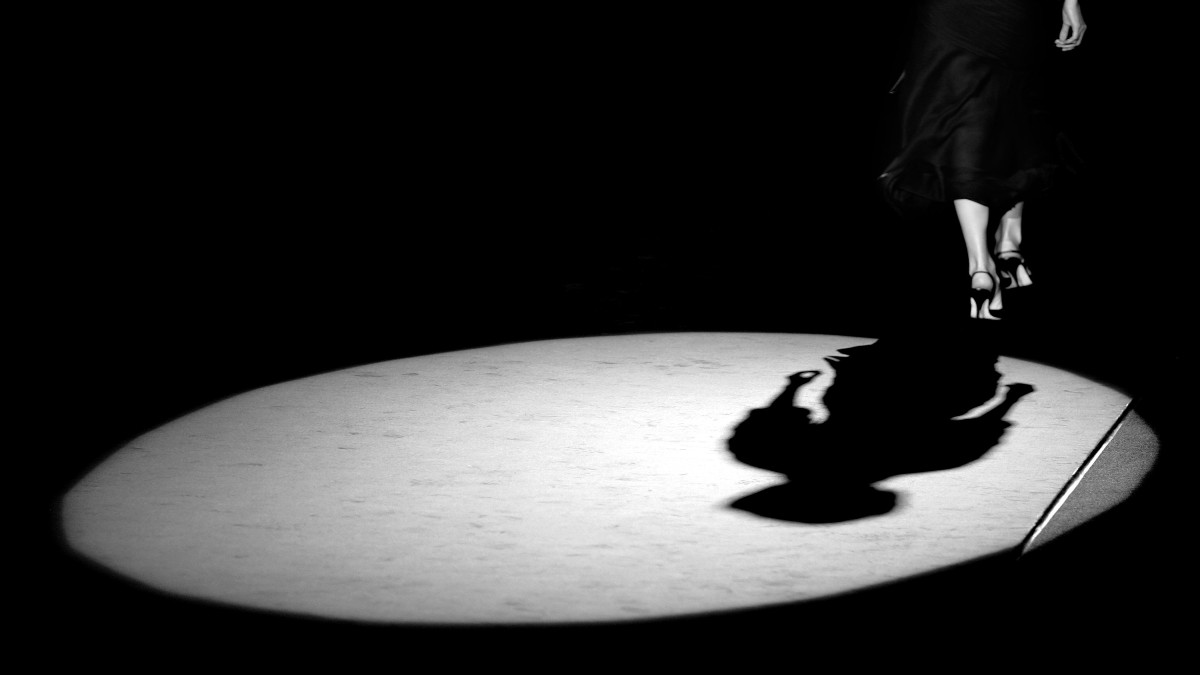Does Thunderbird’s approval (finally) signal showtime for mineral sands?

Mineral sands is getting some love following Sheffield's Thunderbird investment decision. Pic: via Getty Images
Sheffield Resources’ move to press the big green ‘Develop’ button on its monster Thunderbird project could be shoving Australia’s often unnoticed mineral sands sector into the limelight.
While zircon and titanium feedstocks like ilmenite aren’t quite in the everyday vernacular – like, say, lithium – just yet, they are every bit in as high demand as many of the other critical minerals which we are all scrambling to secure supplies for.
Supplies of zircon have become increasingly tight as demand for high-tech uses such as additive manufacturing and semiconductors piles on top of demand for more traditional uses such as ceramics, tiles and foundry material.
This is best highlighted by Iluka Resources noting in its half yearly presentation in August that the weighted average price of zircon in the second quarter of 2022 had hit US$1,910/t, a 45% increase from the first half of 2021.
It attributed this price growth to robust European tile production, strong demand from the Brazilian and Mexican ceramics industry, and high demand for foundry and fused zirconia in the US.
Data from industry analyst Ruidow shows Iluka’s 66% zircon sand hitting US$2,252/t as of 30 September 2022.
The other pillar of mineral sands – namely titanium feedstocks such as rutile that are used to produce titanium metal and pigments – have also benefitted from strong demand with Iluka noting that customers are prioritising security of supply.
Rutile prices in the first half of 2022 have climbed by 23% from the same period the previous year to US$1,506/t.
This was supported by Image Resources (ASX:IMA) reporting a much higher average realised sale price for its heavy mineral concentrate of $929/t in the first half of 2022, compared to $480/t in the same period the previous year.
Some near-term caution
However, there might be some headwinds ahead for the sector in the near-term.
Speaking to Stockhead, VP Capital co-founder and portfolio manager John So noted that the outlook for mineral sands might be a little mixed in the near-term.
“Prices have obviously risen significantly in the past two years and that is driven by underinvestment in the industry, tight supply and difficult logistics in the past two years especially out of China and Europe, and there’s not a lot of major mines coming on,” he noted.
“We’ve seen mines like Thunderbird getting the final investment decision to go ahead, but obviously this takes a bit of time and there are some other major projects drumming along in the background, but they’re not near being funded anyway.”
However, he noted that while zircon was considered a critical mineral because of its use in nuclear power, demand from that sector was unlikely to increase in the short-term. Even if countries like Japan or the UK restarted older reactors and/or built new ones, they would take significant time to come on stream.
“In the meantime, I think there’s probably going to have weakness in a renovation market, whether it is for paints, for pigmentation, which is what your rutile and ilmenite is for, and zircon for ceramics,” he added.
“Your major consumers are still countries like China, which is predominantly driven by the construction industry and there’s a lot of weakness there in the real estate sector.
“I think around the OECD countries we’re going to see similar weakness in the housing market with high inflation and cost of living eating into people’s spending power.”
So pointed out that these issues are likely to present some headwinds for any industry that’s housing-related – like mineral sands.
“Against that, the good thing is there’s been an underinvestment. Even if prices were to come down a little bit, a lot of these companies, like Iluka for example, are still immensely profitable,” he explained.
“Over the medium term, we know zircon is a is a critical mineral and the US is obviously trying to build up its downstream capabilities, which predominantly is in China’s sphere at the moment.
“So in the medium term, I have a positive outlook for companies in these industries especially for those who time the start of their projects just right to benefit.”
ASX mineral sands plays
With that in mind, just what have some of the companies producing or exploring for mineral sands been up to in recent months?
Sheffield Resources (ASX:SFX)
Sheffield has of course made its final investment decision for the Thunderbird mineral sands project in northern WA.
Thunderbird boasts the world’s largest high grade zircon reserve and is expected to produce 6.5% of the world’s supply once it is up and running.
The $484m project is fully funded and site construction activities are already more than 40% complete.
Post-tax NPV and IRR has been estimated at $1.3bn and 28% respectively while average annual EBITDA is estimated at $225m.
In mid-September, Astro upgraded higher confidence Inferred Resources at its Governor Broome heavy mineral sands project in Western Australia by 50% to 78Mt grading 4.5% heavy minerals, or about 62% of the overall resource.
This follows the definition of a maiden Indicated resource of 22Mt at 4.5% HM at the Jack Track deposit and an updated Indicated resource of 8Mt at 5% HM at the Governor Broome West deposit.
For the company, this resource growth highlights a viable commercialisation pathway for the project with a Scoping Study now planned.
It also intends to carry out metallurgical testing and an assessment of the mineral assemblage of a bulk sample from Jack Track.
Governor Broome is located 95km south of Busselton, 105km south of Iluka’s Capel processing plant, and 135km from Bunbury Port where Doral has a heavy minerals separation facility.
Astron Corporation (ASX:ATR)
Astron has been reviewing the configuration of its Donald mineral sands and rare earths project about 300km northwest of Melbourne, Victoria.
This is aimed at establishing the lower risk path towards commercialisation of the Phase 1 development of the project while maintaining its flexibility to deliver the value which developing the broader tenement resources would deliver.
Notable outcomes to date are the reduction in ore throughput from 12.5Mtpa to 7.5Mtpa, which will result in a roughly proportionate decrease in HMC and finished product output; producing two product streams, a valuable HMC and a REE concentrate, rather than separating the HMC to produce zircon and titania final products; elimination of an onsite Wet High Intensity Magnetic System (WHIMS) plant and a dry mineral separation plant.
This will reduce the footprint of the processing plant and associated facilities while paving the way for offsite processing of HMC product to final zircon and titania products.
Preliminary Stage 1 annual production is expected to be between 250,000t and 300,000t of HMC and 7,000t to 10,000t of REE concentrate.
The Phase 1 Feasibility Study is expected to be completed in the first quarter of 2023.
Diatreme Resources (ASX:DRX)
While focused more on its silica sands projects, Diatreme continues to progress talks to facilitate the development of its Cyclone zircon project in WA.
The company credited rising prices for zircon and rutile along with constrained supply for underpinning project demand.
IperionX (ASX:IPX)
IperionX holds the Titan project in Tennessee, which is one of the largest deposits of critical materials – including titanium, zirconium, and rare earth elements – in the US.
Its unconsolidated, near surface mineral sand-hosted material allows the potential for simple, low-impact, low-cost and sustainable mineral extraction, unlike many hard rock mineral deposits.
Under a Scoping Study, the project is expected to mine over 242.6Mt of material over 25 years with annual production of 22,400t of premium zircon, 16,100t of zircon concentrate, 95,500t of ilemenite, 17,700t of rutile, and 4,650t of REE concentrate.
This is expected to deliver annual average EBITDA of US$117m with payback in just 1.9 years.
While Titan is not the company’s primary focus, material from the project has been used successfully to produce high-value spherical titanium alloy powder.
This was achieved using its technologies which have the potential to produce titanium products which are fully-recyclable, have low carbon intensity and quality that exceeds current industrial standards.
Image Resources (ASX:IMA)
Image is a producer of heavy mineral concentrates from its high-grade, zircon-rich Boonanarring project just 80km north of Perth.
Its production during the first half of 2022 slipped to 91,000t compared to 187,000t in the same period the previous year due to the mining of record, low ore grades.
This was more than offset by much higher product prices, resulting in a 26% increase in sales revenue to $91.8m while EBITDA rose 39% to $40.6m.
More recently, the company has executed an access and compensation agreement with the landowner over the southern extension of its Boonanarring project.
This provides the opportunity to extend mining operations at the project for a further three to four months, pushing the completion of ore processing at the project out to May-June 2023.
Past that, the company will relocate its mining and processing equipment to the Atlas project, which will take at least three months and cost about $25m.
Strandline Resources (ASX:STA)
Strandline is progressing its Coburn mineral sands project in WA towards production with its last update in September noting that pre-production mining works are nearly complete with the first open pit ready for mining.
Meanwhile, commissioning of Wet Concentration Plant systems are progressing rapidly while operations and maintenance teams are mobilising to site.
The company expects to make its first shipment of concentrate in the coming quarter. Each 10,000t shipment is indicatively valued at about $10m at current spot prices.
Coburn is projected to deliver revenue of $4.4bn over the initial 22.5 mine life. Pre-tax NPV is estimated at $705m while annual average EBITDA is estimated at $104m.
Binding offtake has already been secured for 100% of the project’s initial production.
Sovereign Metals (ASX:SVM)
Over in Malawi, drilling at Sovereign’s Kasiya rutile project has identified high-grade mineralisation at depth under previous drilling in most targeted areas.
While existing pit shells for the current 1.8 billion tonne resource extend to an average depth of 15m, recent aircore drilling has returned thick and deep intersections of high-grade rutile.
Highlights are 28m at 1.05% rutile including 5m at 1.78% rutile, 25m at 1.06% including 13m at 1.15% rutile, and 20m at 1.29% rutile.
A new resource estimate is expected in the first quarter of 2023 while a PFS is expected in the second quarter of 2023.
More MoUs are expected to be executed after Sovereign this year announced offtakes for premium bagged rutile for the welding industry with Hascor and with Japanese trading giant Mitsui to target the Asian titanium feedstock market.
Related Topics

UNLOCK INSIGHTS
Discover the untold stories of emerging ASX stocks.
Daily news and expert analysis, it's free to subscribe.
By proceeding, you confirm you understand that we handle personal information in accordance with our Privacy Policy.








